If you need to manage multiple projects, it’s recommended to have a matrix organizational structure in place. Projects have many activities, from resource planning to task management and everything in between. Therefore, that organizational structure shouldn’t be rigid, but flexible and efficient.
Every organization is structured in some way, and that structure is determined by its business goals and project objectives. The way you structure the functional areas of an organization is going to offer a standard for operating procedures and routines. It will also determine what your team members do, and what project management tools are best for the job at hand.
Matrix organizational structures are often used in project management because they speak to both the product of the project and the functional department of the management producing it. Let’s take a closer look at this type of organizational structure to determine its pros and cons in project management.
What Is a Matrix Organizational Structure?
A matrix organizational structure establishes two chains of command, where employees have two bosses or managers, a functional manager or department head and a project manager.
The project manager focuses exclusively on project-specific goals while the functional manager manages the day-to-day operations of their business department. In doing so, both contribute to the efficient allocation of resources to achieve the larger strategic goals of the organization.
The matrix organization is the structure uniting these two chains of command to give them balance. These roles are fluid and not fixed, as the hierarchical structure between these two kinds of managers isn’t organizationally defined.
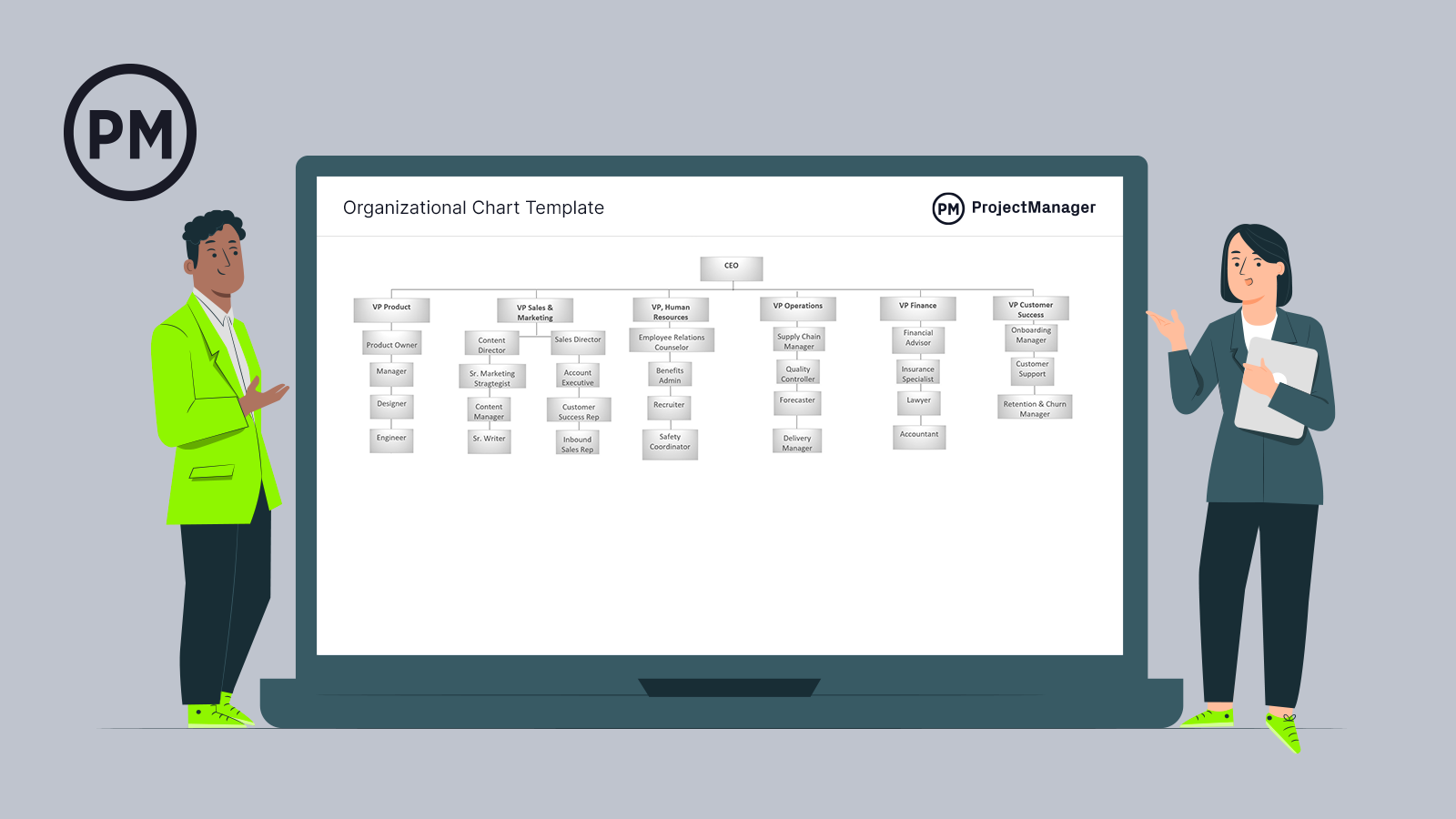
Get your free
Organizational Chart Template
Use this free Organizational Chart Template for Excel to manage your projects better.
This two-boss matrix will employ the best of both organizational charts and management styles to achieve business goals through the parallel execution of multiple projects. This way, if an organization is working on producing a variety of products or services at the same time, these two managerial roles can work together to coordinate the efforts of cross-functional teams and use that duality to their advantage through the matrix organizational structure.
Managing multiple projects requires robust project management software. ProjectManager has an overview section that includes portfolio roadmaps. This Gantt chart view lets you see all the projects in your portfolio on one page to better strategize resource planning. Get better organized today by trying our tool for free.
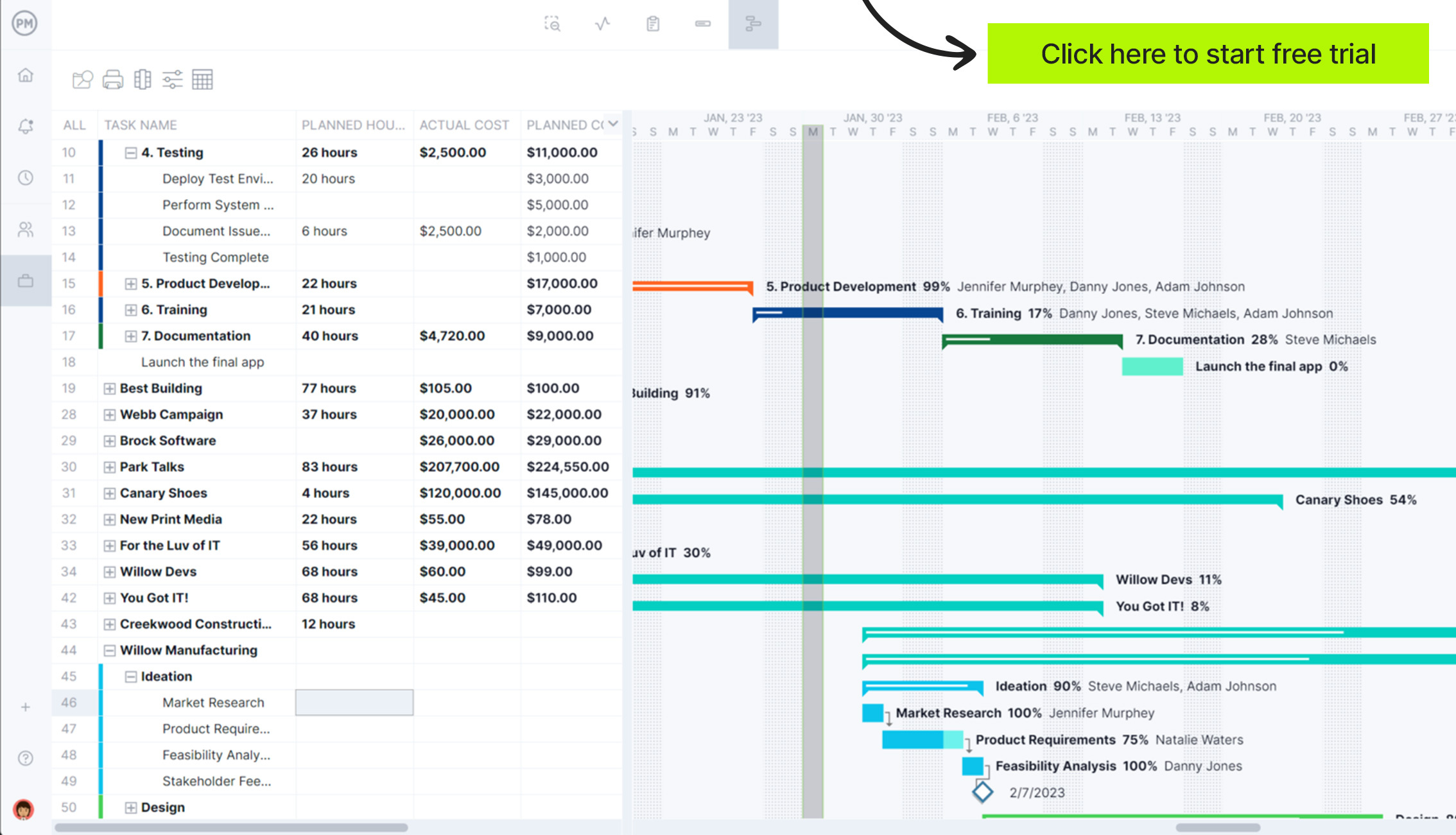
How Does a Matrix Organizational Structure Work?
A matrix structure is more than just overlapping an organizational chart on top of another. Using matrix organizations requires careful planning and team collaboration tools.
Matrix structures work by fostering cross-team collaboration and shared resource planning across projects. Simply put, a matrix organization structure reorganizes companies to maximize their productivity and uses two chains of command to make them more dynamic.
The best way to understand how the structure of a business or nonprofit works is to draw an organizational chart, which shows roles, responsibilities and chain of command for its department managers and employees. This type of chart is also referred to as organigram or organizational breakdown structure (OBS).
Matrix Structure Example
To better illustrate how a matrix organization works, let’s compare a matrix organizational structure example against a functional organizational chart, the most commonly used structure.
The organizational chart below divides employees by their business department such as product development, marketing, operations management and finance. It also shows their corresponding manager, which in this case is a vice president (VP) position.
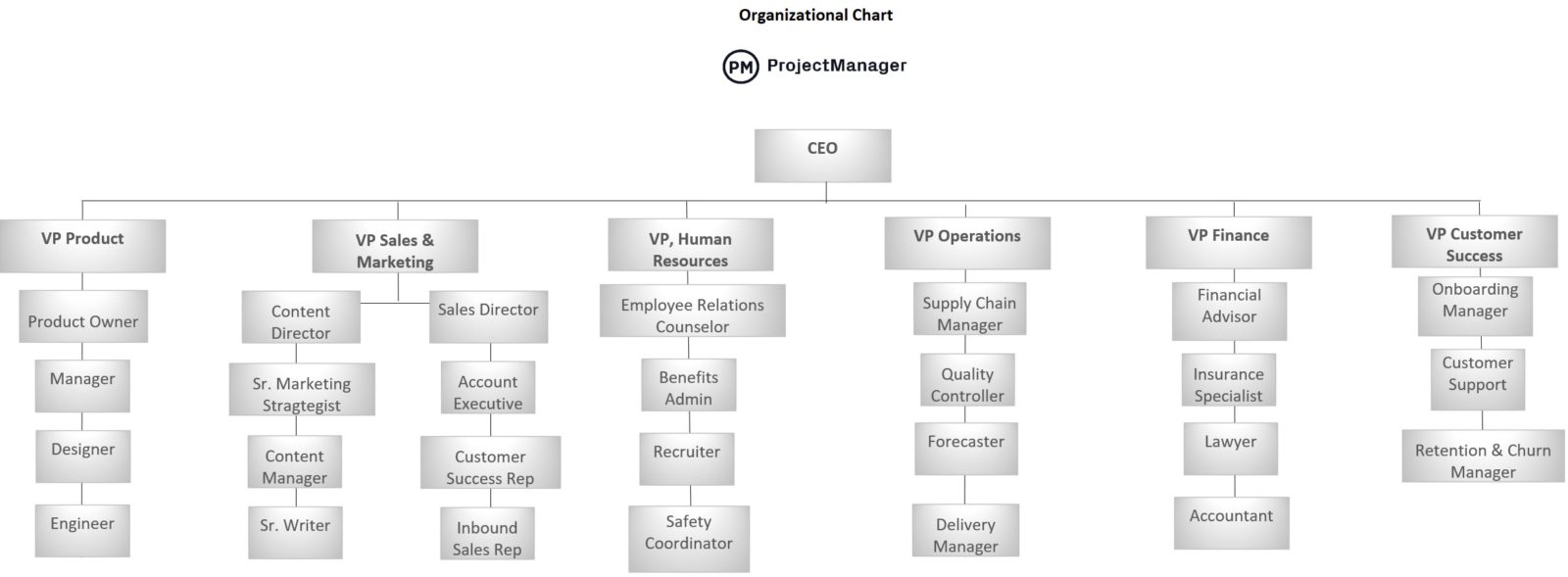
The matrix structure diagram below shows what this organization would look like in a matrix environment. Now each of these business department employees will not only report to its corresponding VP but also to a project manager who will be in charge of specific projects.
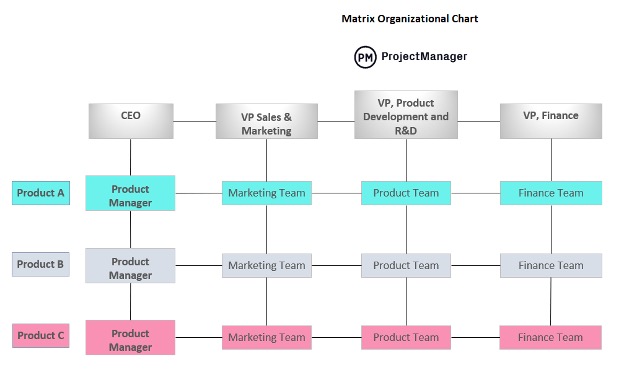
This matrix environment is ideal for project-based organizations that execute multiple projects simultaneously. To achieve this, they must assign each project to a project manager who will be responsible for overseeing its execution and working collaboratively with department managers and employees.
In a matrix organizational structure example like this, the project manager will strive to get projects delivered on time, under budget and meeting quality standards, while the main focus of department managers is to manage their teams’ workload, achieve department-level goals, monitor employee performance and allocate resources across projects.
Matrix Organizational Chart Template
This free matrix organizational chart template helps you easily visualize the structure of a project-based organization like the one in the matrix structure example above. Its color-coded boxes allow employees to easily understand what the different projects are they’ll participate in.
Advantages and Disadvantages of a Matrix Organizational Structure
A matrix organizational structure isn’t a one-size-fits-all solution. Some advantages and disadvantages need to be understood to know if it’s the right one for the organization. Plus, there are three types of matrix structures that you’ll need to know before making a decision. But before we learn about those types, here are the main pros and cons of using a matrix structure.
Advantages of a Matrix Structure
A matrix organizational structure can benefit your company because:
- It allows the sharing of skilled resources between functional units and projects, which facilitates resource management.
- It fosters better cross-functional communications, which improves team collaboration and builds a more dynamic organization.
- It helps organizations achieve their goals at a faster pace, thanks to a higher use of material and human resources.
- This structure is great for employees who are looking to widen their experience and skill sets. It puts them in an environment that facilitates learning and allows them to grow professionally.
Disadvantages of a Matrix Structure
As usual, there are also some cons associated with the use of matrix organizational structures:
- There can be some confusion about the organization’s hierarchical structure when a team member is subject to two managers, and it can be difficult to reach a balance of power between them. That can also create unnecessary conflict.
- Resource constraints can become an issue if managers don’t communicate during the resource planning process.
- There are a lot of managers in a matrix organizational chart, which is not to everyone’s liking. And having more people in managerial positions affects the company’s costs.
- Team members can feel the strain of working in a matrix organizational structure, in that their workload can be heavy.
Types of Matrix Organizational Structures
The main difference between these matrix structure types is the balance of power between the functional manager and the project manager. Let’s see how they differ.
Weak Matrix Organization
In a weak matrix organization, the functional manager oversees all project management areas and is the highest authority in the decision-making process throughout the project. The project manager on the other hand has a much lower authority and has to answer to the functional manager.
Balanced Matrix Organization
In this type of matrix structure, the project manager has more authority than in a weak matrix organization. The functional manager still acts as the primary managerial authority in the decision-making process.

Strong Matrix Organization
In a strong matrix organization, the project manager has equal or more power than the functional manager. The project manager has control over resource planning and task management.
ProjectManager Can Help you Run a Matrix Organizational Structure
Given the complexity of a matrix organizational structure, it’s critical to have the right project management tools to make sure team members are receiving their tasks in a clear and orderly fashion. Two bosses can create chaos, so having all project communication housed in one software is essential.
ProjectManager enables team members to see their tasks in one place, regardless of whether a project or functional manager assigned it to them. This enables them to manage their workflow more efficiently, marking their progress and adding comments along the way for managers. They can also work on tasks by project if they want to stay in one mindset before moving on to another.
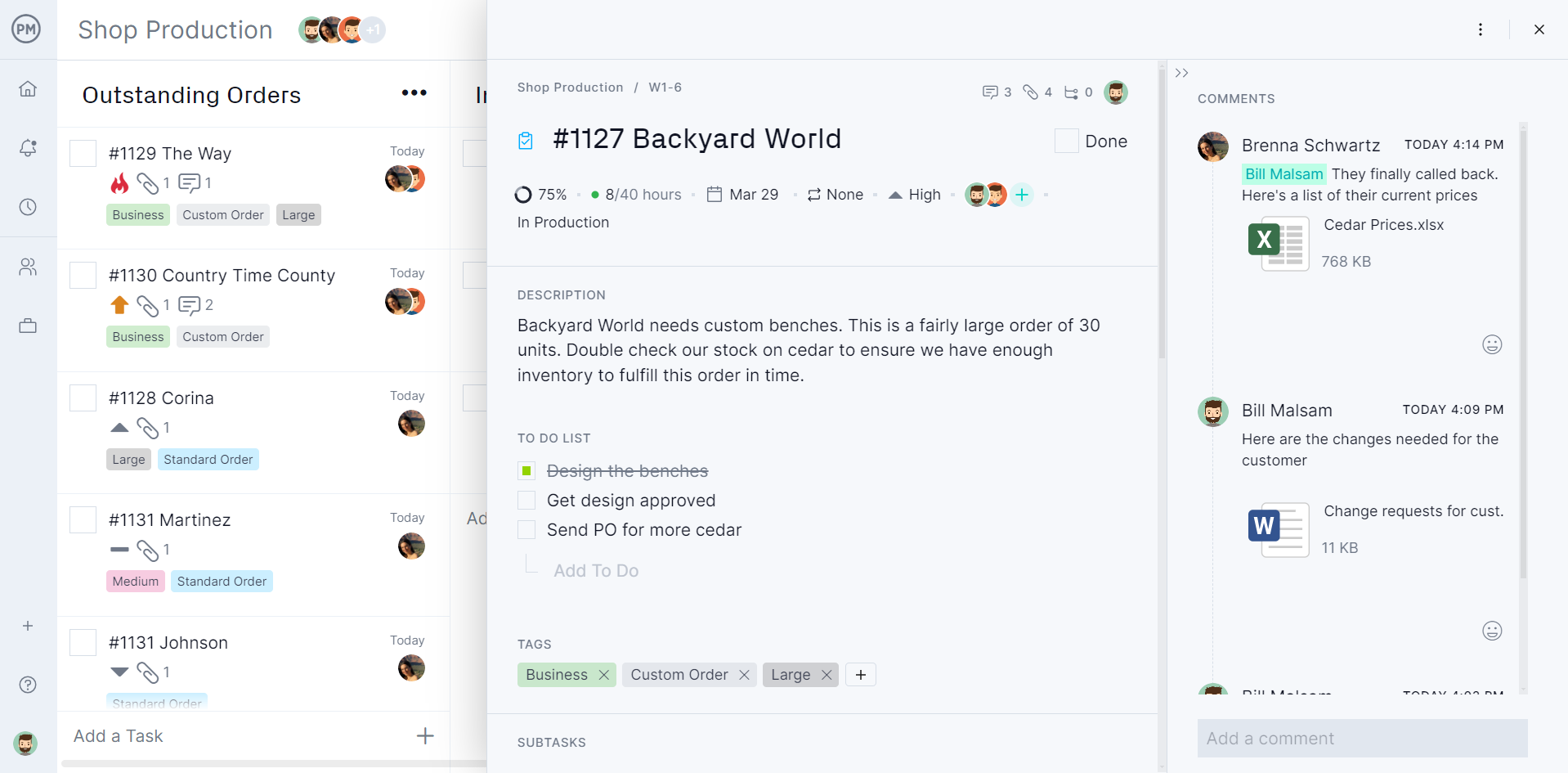
For project and functional managers, the reporting tools in ProjectManager can be nothing short of essential. With a real time project dashboard and advanced reporting features, management can always keep abreast of what’s going on. With ProjectManager, you can make a project report with just one click. Our reports include status reports, task reports, variance reports, availability reports and more. This is an all-encompassing project management software that suits everyone in the organization.

Related Organizational Planning Content
- What Is Organizational Planning in Project Management?
- What Is Organizational Strategy in Business? (Examples Included)
- Organizational Resources Basics: Managing Company Resources
- What Is Organization Design? Types, Principles & More
- Organizational Process Assets: Definitions, Examples & Templates
When dealing with multiple projects, a matrix organizational structure can give you an advantage, but only if you and your team are equipped with powerful tools. ProjectManager is online project management software that is built to manage projects of all sizes and levels of complexity. Its real-time data keeps managers updated and gives project teams a collaborative platform. Try it today with this free 30-day trial.

